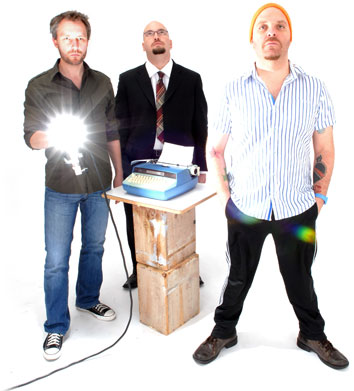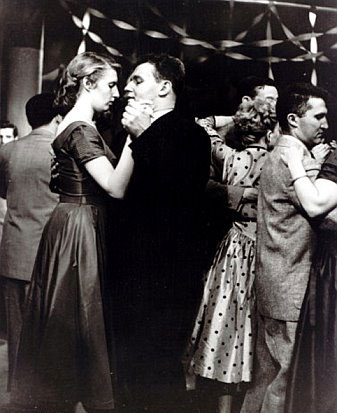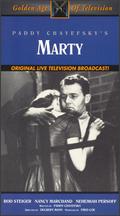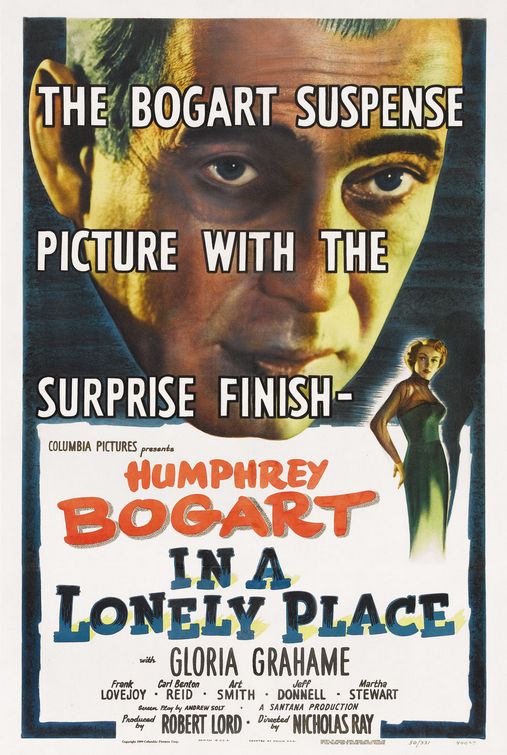“It is cruel to discover one’s mediocrity only when it is too late.”
W. Somerset Maugham, Of Human Bondage
Archives for 2009
TT: Two little words
I’ve been too busy to say anything about the outpouring of responses to my Wall Street Journal column about the shrinking audience for jazz in America. Much of what’s been written about “Can Jazz Be Saved?” (though not all) has been angry, and most of it misses the point.
 The latest writer to sound off is Nate Chinen, who responded in the New York Times with a piece called “Doomsayers May Be Playing Taps, but Jazz Isn’t Ready to Sing the Blues.” Chinen’s piece, though it lacks the hysterical edge of some of the recent blog postings about my column, sticks fairly closely to what has become the standard line about “Can Jazz Be Saved?” It revolves around two little words:
The latest writer to sound off is Nate Chinen, who responded in the New York Times with a piece called “Doomsayers May Be Playing Taps, but Jazz Isn’t Ready to Sing the Blues.” Chinen’s piece, though it lacks the hysterical edge of some of the recent blog postings about my column, sticks fairly closely to what has become the standard line about “Can Jazz Be Saved?” It revolves around two little words:
Mr. Teachout wasn’t the first to sound an alarm: the jazz historian Ted Gioia weighed in last month at the Web site Jazz.com. “The most likely–indeed the only plausible–explanation for these numbers is that very few new fans have discovered jazz since the 1980s,” Mr. Gioia wrote. “The old fans continue to follow the music, but teenagers and 20-somethings have very little interest in jazz.”
But there’s a wealth of anecdotal evidence to the contrary, as many jazz bloggers and commentators, responding mainly to Mr. Teachout, have been quick to point out. Try dropping in one night this week at the Village Vanguard, where Jason Moran and the Bandwagon are appearing. Or head to the Stone in the East Village, which is likely to hit sweaty capacity for each set programmed by the young drummer-composer Tyshawn Sorey. Or stop by the Highline Ballroom in Chelsea on Friday night for a show by the Bad Plus. Scratch anywhere past the surface and you might begin to wonder whether the likes of Mr. Teachout and Mr. Gioia don’t see young people listening because they don’t know where to look.
The words in question are, of course, “anecdotal evidence.” We’ve been hearing a lot of that lately. It seems that everyone who doesn’t like what Ted Gioia and I had to say went to a jazz club the other night and saw lots of young people there, which means that jazz is alive, well, and thriving. End of story.
Would that it were so simple! Alas, the trouble with Nate Chinen’s piece is that it omits another pair of words that tell a very different story: median age. To quote from my original column:
The median age of adults in America who attended a live jazz performance in 2008 was 46. In 1982 it was 29.
That’s not anecdotal evidence. It’s a finding from a survey jointly conducted by the National Endowment for the Arts and the Census Bureau, and it knocks a mile-wide hole in Chinen’s piece, as well as virtually everything else that’s been written to date about “Can Jazz Be Saved?” The fact that the median age of live jazz audiences in America has gone up by seventeen years in the course of the past quarter-century can mean only one thing: live jazz is simply not attracting enough new young listeners to replace the older ones who are staying home or dying off. Period.
As for the question of whether “the likes of Mr. Teachout and Mr. Gioia” know where to look for young jazz fans, I hasten to point out that I’ve been writing enthusiastically about the Bad Plus ever since 2003, the same length of time as Nate Chinen. I’m also a longtime fan of Medeski, Martin & Wood, another band that Chinen cites in his New York Times piece. More power to both groups, but the fact that they’re drawing young crowds is also beside the point. No amount of anecdotal evidence, however seductive it may seem at first glance, will change the fact that the overall audience for live jazz in America is growing older at an alarmingly rapid rate. Anyone who refuses to face that unpleasant fact–or to bother mentioning it in a piece that seeks to reassure its readers that jazz is in great shape–is part of the problem.
One more thing: what’s happening to jazz now was happening to classical music a decade and a half ago. That’s more or less how long it took for classical performers and presenters to admit the truth about their aging audience and start trying to do something about it. How long will it take before jazz musicians–and journalists–come to the same conclusion?
UPDATE: Says Ted Gioia:
The Times cites “anecdotal evidence” of young people attending jazz events. Meanwhile clubs, festivals, record labels, etc. are shutting down. I guess they need a new infusion of anecdotes.
No kidding.
TT: More gold than lead
 Last year I wrote a “Sightings” column for The Wall Street Journal about Studio One Anthology, a six-DVD box set containing seventeen dramas that were originally broadcast live on CBS’ Studio One, one of the best-remembered anthology series of what is now known, rightly or wrongly, as the “golden age” of television:
Last year I wrote a “Sightings” column for The Wall Street Journal about Studio One Anthology, a six-DVD box set containing seventeen dramas that were originally broadcast live on CBS’ Studio One, one of the best-remembered anthology series of what is now known, rightly or wrongly, as the “golden age” of television:
It’s said that series TV today is better than ever before, and that the so-called Golden Age of Television mostly amounted to an endless string of low-budget sitcoms, mysteries and Westerns. As the weaker episodes included in “Studio One Anthology” make all too clear, there’s something to be said for that skeptical point of view. Most of the original plays that aired on the anthology series of the ’50s were mediocre and have been rightly forgotten. But more than a few of them, like “Twelve Angry Men” and “Marty,” were very, very good–and network TV in the ’50s, lest we forget, was also bringing its viewers such blue-chip fare as Arturo Toscanini and the NBC Symphony, Jerome Robbins’ “Peter Pan,” “An Evening with Fred Astaire” and the wildly zany comedy of Sid Caesar and Ernie Kovacs.
Back then, of course, CBS, NBC and ABC still aspired on occasion to offer viewers something more than lowest-common-denominator escapism as part of their daily entertainment diet. Now they mostly play it as safe as skim milk, leaving the risk-taking to cable TV. “Studio One Anthology” is a wistful reminder of how much things have changed since the naïve and hopeful days when television was young.
 I felt at the time that Koch Vision, which released Studio One Anthology, would have done better to put out a set that cherry-picked a variety of first-rate TV dramas from the Fifties rather than concentrating on a single series. Now the Criterion Collection is planning to do just that. The Golden Age of Television, scheduled for release on November 24 but now available for preordering, is a three-disc set containing eight important live TV dramas originally telecast between 1953 and 1958, including the original versions of Paddy Chayefsky’s “Marty” and Rod Serling’s “Patterns” and “Requiem for a Heavyweight.” While TV buffs with very long memories will recall that all eight of these programs were rebroadcast on PBS a quarter-century ago and subsequently issued on videocassette, this will be the first time that any of them has been officially released on DVD.
I felt at the time that Koch Vision, which released Studio One Anthology, would have done better to put out a set that cherry-picked a variety of first-rate TV dramas from the Fifties rather than concentrating on a single series. Now the Criterion Collection is planning to do just that. The Golden Age of Television, scheduled for release on November 24 but now available for preordering, is a three-disc set containing eight important live TV dramas originally telecast between 1953 and 1958, including the original versions of Paddy Chayefsky’s “Marty” and Rod Serling’s “Patterns” and “Requiem for a Heavyweight.” While TV buffs with very long memories will recall that all eight of these programs were rebroadcast on PBS a quarter-century ago and subsequently issued on videocassette, this will be the first time that any of them has been officially released on DVD.
I wrote about “Marty” in this space two years ago:
The original hour-long TV version…is lean, direct, and characterful, and Rod Steiger and Nancy Marchand, who play a pair of painfully plain New Yorkers looking for love, are so natural and unaffected that they scarcely seem to be acting at all. It’s easy to see why Marty, though it only aired once on network TV, made a deep and long-lasting impression on all who saw it.
Those comments were based on a single viewing of a used and decidedly battered copy of the videocassette version of “Marty.” I can’t wait to how it looks after being given the Criterion Collection treatment.
TT: Snapshot
The opening scene of Rod Serling’s “Requiem for a Heavyweight,” starring Jack Palance, Keenan Wynn, and Ed Wynn, originally telecast live on CBS’ Playhouse 90 on October 11, 1956:
(This is the latest in a weekly series of arts-related videos that appear in this space each Wednesday.)
TT: Almanac
“Money is like a sixth sense without which you cannot make a complete use of the other five.”
W. Somerset Maugham, Of Human Bondage
TT: On the big screen
 New York-based cinephiles, take note: In a Lonely Place, starring Humphrey Bogart and Gloria Grahame, opens Friday at the Film Forum for a nine-day run. Nicholas Ray’s 1950 study of an angry screenwriter suspected of murder is widely ranked next to Jacques Tourneur’s Out of the Past as the quintessential film noir, a judgment in which I wholeheartedly concur.
New York-based cinephiles, take note: In a Lonely Place, starring Humphrey Bogart and Gloria Grahame, opens Friday at the Film Forum for a nine-day run. Nicholas Ray’s 1950 study of an angry screenwriter suspected of murder is widely ranked next to Jacques Tourneur’s Out of the Past as the quintessential film noir, a judgment in which I wholeheartedly concur.
David Thomson, among countless other critics, is a great admirer of In a Lonely Place:
Like any American director, [Ray] had to accept some routine assignments, but in the next few years he added these marvels to his list: In a Lonely Place (with Humphrey Bogart playing an embittered and potentially violent Hollywood screenwriter); On Dangerous Ground (which has Robert Ryan as a brutal cop); and The Lusty Men (where Robert Mitchum is a rodeo veteran who agrees to train the young Arthur Kennedy, but falls in love with his wife Susan Hayward).
None of those films did especially well. They were all black and white. But they are filled with anguish and ecstasy and a kind of framing and lighting and camera movement that steadily deepens the routine script material. In a Lonely Place is less showy than Sunset Boulevard, but it is the truer portrait of Hollywood compromise and hypocrisy….
Certainly it’s the greatest performance that Bogart ever gave in front of a camera, and if you’ve never seen it in a theater, I strongly recommend that you make every effort to do so now. Book your tickets now–I’ll be very surprised if this one doesn’t sell out.
For more information, go here.
* * *
The theatrical trailer for In a Lonely Place. The singer performing “I Hadn’t Anyone Till You” is Hadda Brooks:
TT: Almanac
“Now the world in general doesn’t know what to make of originality; it is startled out of its comfortable habits of thought, and its first reaction is one of anger.”
W. Somerset Maugham, Great Novelists and Their Novels
TT: Behind the scenes
Bill Evans, the most influential jazz pianist of the postwar era, would have turned eighty on Sunday. In honor of that anniversary, Marc Myers has just posted the first installment of a five-part interview with Laurie Verchomin, who was Evans’ lover during the last year and a half of his life. You can read it by going to JazzWax, Marc’s blog. It promises to be essential reading.
* * *
The Bill Evans Trio plays “Midnight Mood” live in 1979:
